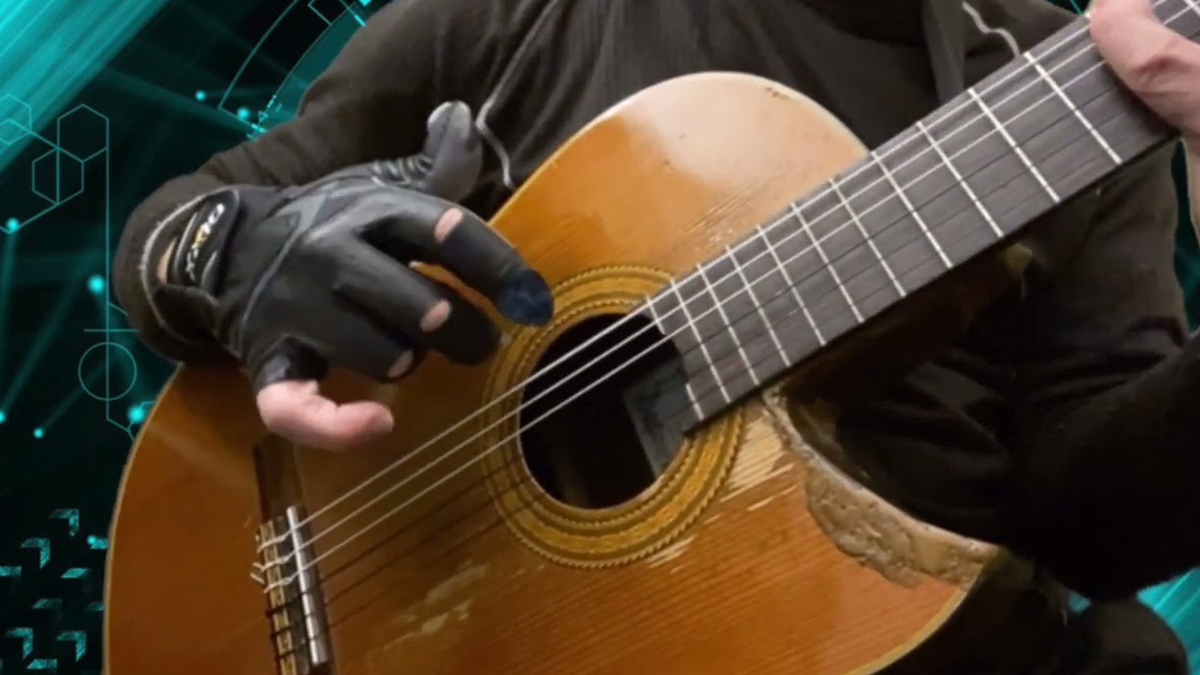
Throughout history, the guitar has passed through the hands of countless six-string pioneers who have all contributed to the lore of the instrument, from Eddie Van Halen’s two-hand tapping to Steve Vai’s joint shifting and beyond.
Yet the players of today continue to prove there is still so much to be discovered on the instrument. First, it was Donn Aaron’s bubble harmonics technique. More recently, it was Thiago Trinsi’s alternate hybrid picking approach.
Now, there’s another new playing development for guitarists, particularly those from an acoustic guitar or classical guitar background: the matter-of-factly named “up-and-down” fingerstyle technique.
Developed by Gio Guido, the “up-and-down” approach takes cues from the styles of current fingerstyle masters such as Al Di Meola and John McLaughlin – as well as the genre of flamenco guitar – but takes things up a notch to promote speed, string agility, and picking economy.
It operates exactly as its name would suggest – the fingers on your non-fretting hand pick down on the string using the face of the nail, as well as the usual up movement – but there’s a bit more specificity to the technique required in order to truly master it.
But first, a bit of history: according to Guido, his path to up-and-down fingerstyle began back in 2009, when he was offered a gig opening for a flamenco event in Brooklyn, New York.
“That gig gave me the motivation to improve my fingerstyle technique,” he tells us. “I had about a month to get ready for it. Back then I was playing fingerstyle, too, but only for chord melodies. My main technique for single notes playing was by playing with the pick.
“So I started listening to flamenco, in particular to Paco de Lucia,” Guido goes on. “I started practicing a lot, following his style of using all four fingers and their combination. That experience has been my main inspiration and the start of my fingerstyle technique development.”
Guido, who has been playing guitar since he was eight years old, then sought to combine the techniques of his new flamenco and fingerstyle heroes with those championed by his early influences – or, as he puts it, “virtuoso guitarists playing with the plectrum”.
Jimmy Page, David Gilmour, Eric Clapton and several other rock guitarists all had a formative impact on Guido, whose “will for being able to improvise” was further informed by the music of Jim Hall, Wes Montgomery, George Benson and John Scofield.
These styles all came together in a musical melting pot that has been carefully curated by Guido, whose playing has been mostly centered on fingerstyle since 2010.
On paper, the combined styles of Page, Gilmour, Clapton, Di Meola and McLaughlin – along with the aforementioned jazz titans – all tease something pretty extraordinary. Unsurprisingly, the reality doesn’t disappoint.
In the various demo videos, Guido’s ultra-agile bebop style can be seen and heard, usually executed with the help of a patent-pending glove he developed in order to facilitate more effective and consistent picking.
As mentioned above, there is a particular science behind the up-and-down style. The first three picking fingers operate in two pairs: index and middle, and middle and ring. On paper, the technique gets players to combine two ‘up’ strokes and one ‘down’ pick.
For that first pair, for example, a middle and index finger 'up' pick is followed by a 'down' pick with the index finger. It’s probably best to defer to Guido’s videos for a visual breakdown of how it all works.
Effectively, think of it as modified single-note alternate picking, but using your finger instead of a guitar pick. Plus, this is merely how Guido uses it, with the guitarist acknowledging, “I do not exclude that there may be other combinations of movements that can also work.”
Speed and agility are but two of the benefits of “up-and-down” fingerstyle. As Guido notes, the technique opens up new tonal avenues: “The sound of the ‘up’ picking is slightly different from the ‘down’ picking as the nail shape is different from down and up,” he reflects.
“Also the up picking involves the touch of the fingertip,” Guido goes on. “That is particularly interesting when playing jazz – it adds that extra swing feel. The movement is double, so when you master it, what can be played with two fingers will have the double speed option.”
Now, using the face of the nail in fingerstyle and flamenco music isn’t unheard of – the rumba technique, for example, is executed by flicking out the fingers in order to strum the strings – but it's decidedly less common for alternate picking lines.
Guido's formula, though, puts an official label on the practice of incorporating both up and down picks in fingerstyle guitar music, which in turn opens up potential avenues for increased speed and nuanced melodic ideas – it might just take a bit of getting used to.
Visit Gio Guido’s website – or his YouTube channel – to see more of the up-and-down fingerstyle approach.







